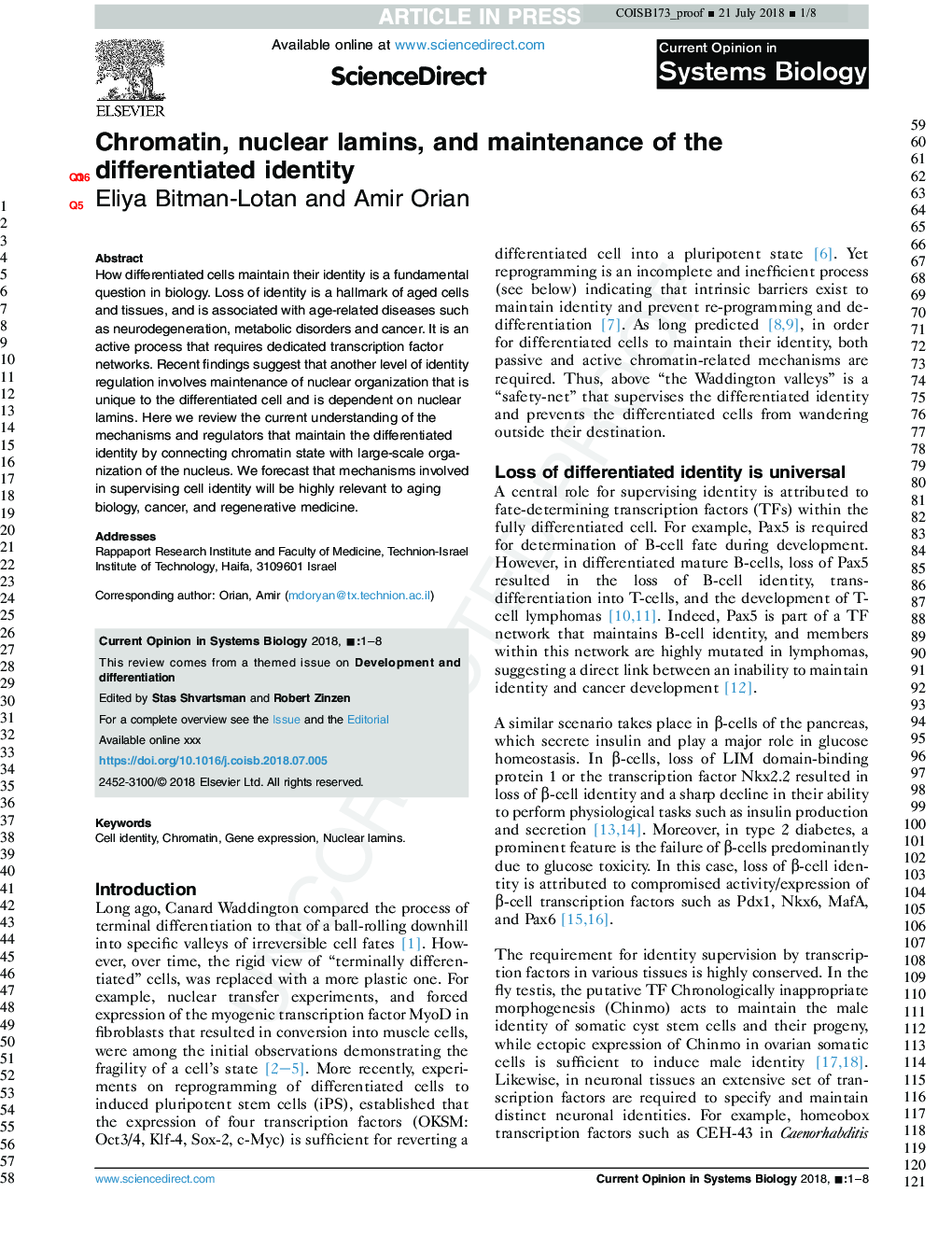| Article ID | Journal | Published Year | Pages | File Type |
|---|---|---|---|---|
| 8918014 | Current Opinion in Systems Biology | 2018 | 8 Pages |
Abstract
How differentiated cells maintain their identity is a fundamental question in biology. Loss of identity is a hallmark of aged cells and tissues, and is associated with age-related diseases such as neurodegeneration, metabolic disorders and cancer. It is an active process that requires dedicated transcription factor networks. Recent findings suggest that another level of identity regulation involves maintenance of nuclear organization that is unique to the differentiated cell and is dependent on nuclear lamins. Here we review the current understanding of the mechanisms and regulators that maintain the differentiated identity by connecting chromatin state with large-scale organization of the nucleus. We forecast that mechanisms involved in supervising cell identity will be highly relevant to aging biology, cancer, and regenerative medicine.
Related Topics
Physical Sciences and Engineering
Computer Science
Computer Science (General)
Authors
Eliya Bitman-Lotan, Amir Orian,
